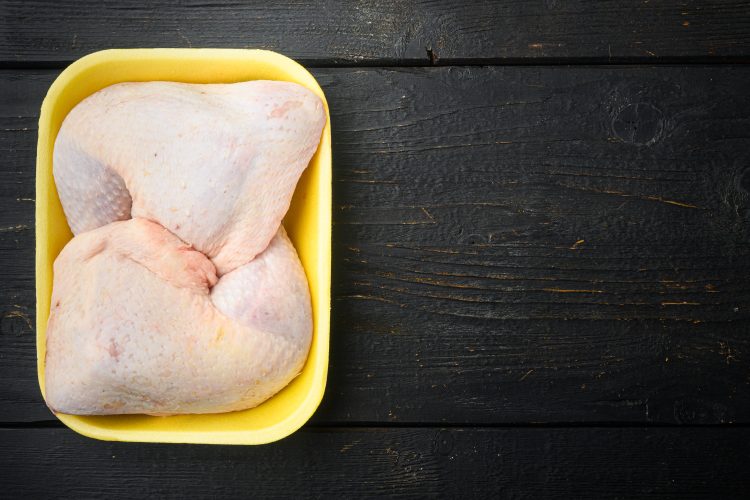Researchers create tray that warns of pathogen contamination
- Like
- Digg
- Del
- Tumblr
- VKontakte
- Buffer
- Love This
- Odnoklassniki
- Meneame
- Blogger
- Amazon
- Yahoo Mail
- Gmail
- AOL
- Newsvine
- HackerNews
- Evernote
- MySpace
- Mail.ru
- Viadeo
- Line
- Comments
- Yummly
- SMS
- Viber
- Telegram
- Subscribe
- Skype
- Facebook Messenger
- Kakao
- LiveJournal
- Yammer
- Edgar
- Fintel
- Mix
- Instapaper
- Copy Link
Posted: 6 July 2023 | Grace Galler | No comments yet
Researchers have created a packaging tray that they claim warns of contamination before the food is unwrapped.


Researchers at McMaster University have created a packaging tray that they claim can signal when Salmonella or other dangerous pathogens are present in packages of raw of cooked foods such as chicken.
The team say that the new technology “will enable producers, retailers and consumers to tell in real time if the contents of a sealed food package are contaminated without having to open it”, something they claim“[prevents] exposure to contamination while simplifying cumbersome and expensive lab-based detection processes that today add significant time and cost to food production”.
The prototype tray is lined with “food-safe reagent” that reportedly allows a built-in sensor to detect and signal the presence of Salmonella. The researchers expressed that the technology can “readily be adapted to test for other common food-borne contaminants”, including E. coli and Listeria.
“This is something that can benefit everyone,” said Researcher Akansha Prasad, the Co-Lead Author of a paper, published in the journal Advanced Materials. “We’re hoping this technology will save lives, money and food waste.”
“There is so much at stake with food safety,” continued Researcher Shadman Khan, Co-Lead Author on the paper. “We wanted to develop a system that was reliable, quick, affordable and easy to use.”
Explaining how the tray works, the researchers outlined that the sloped sides of the tray direct juices to a sensor embedded in a window at the bottom. The team explained: “Without the need for any additional lab work, users can scan the underside of the sealed package with a cell phone and know immediately whether the food is contaminated”.
What BBQ cooking habit increases the risk of food poisoning?
“Having easy, instant access to such information would allow public health authorities, producers and retailers to trace and isolate contamination quickly, reducing potentially serious infections while also cutting back significantly on food waste by identifying precisely which lots of food need to be recalled and destroyed, compared to today’s often broad recalls that end up wasting unspoiled foods,” said the research team.
Going further, the university researchers explained that protecting consumers from contaminated foods “will create significant health-care savings”.
With packaged based sensors that measure other conditions such as humidity becoming common in Japan, according to Co-Author and Associate Professor Tohid Didar, the researchers believe that the Lab-in-a-Package project can be utilised by the industry as a contamination sensor, especially as they believe they have kept is “as adaptable and economical as possible, knowing food producers are under pressure to keep costs low.”
“It’s really just a matter of time before technology like this becomes common all over the world,” said Didar. “Now that we’ve shown that one kind of food package can reveal contamination without even being opened, we can adapt it to other forms of packaging for other types of foods.”
Related topics
Contaminants, Food Safety, Health & Nutrition, Packaging & Labelling, Quality analysis & quality control (QA/QC), Research & development









